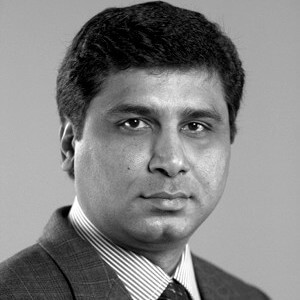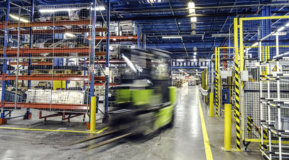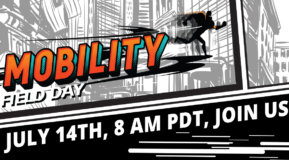
Cloud Field Day 8 kicks off this week, and I’m excited for the livestream on Tuesday, July 15, 2020 from 8am to 10am PT, when the discussion focuses on Aruba and HPE’s edge-to-cloud architecture, AIOps, and how enterprises can deliver a cloud experience to the Edge.
 I caught up with Andy Thurai, a strategic consultant specializing in emerging technologies with a focus on cloud, edge and AI. Thurai is also a contributor to Forbes. Check out his latest Forbes article, How to Rise Above the ITOps Chaos with AI. Andy blogs at www.theFieldCTO.com. Follow him on Twitter and LinkedIn.
I caught up with Andy Thurai, a strategic consultant specializing in emerging technologies with a focus on cloud, edge and AI. Thurai is also a contributor to Forbes. Check out his latest Forbes article, How to Rise Above the ITOps Chaos with AI. Andy blogs at www.theFieldCTO.com. Follow him on Twitter and LinkedIn.
Tanaka: There’s a lot of discussion in our industry about the potential of edge computing, storage and networking. How do you see the Edge changing applications or digital experiences?
Thurai: Cloud, for all practical purposes, started as an extension of the enterprise data center. Edge takes that to a new level and extends the boundaries. The Edge is an extension of enterprise systems and cloud.
The Edge fabric is an interesting concept. Rather than the Edge being a single location or a few connected end points, with an Edge fabric, it becomes a mesh. Given the portability, affordability, and availability of compute, storage, and networking, it’s not that difficult to provide resources at the edge location where it’s needed. In other words, move the compute resources to the data instead of the other way around.
In the old days, if you were trying to make a manufacturing floor smarter, the data was collected and the data was sent to the cloud for analysis. But most times, the data isn’t used in real time. The data models were run overnight or on a weekly or monthly basis.
What’s the point of collecting data and not using it? It’s a pet peeve. Enterprises need to make decisions based on what’s happening now not based on what happened yesterday or a week ago.
Research shows that enterprise CEOs don’t believe in their AI and predictive models, and they make decisions based on gut feelings ignoring their IT and CIO advise. Up to 73% of data collected is not used for predictive models. As the CTO or CIO, when you ask for additional funding, you can’t demonstrate that you have provided value if this trend continues.
In the digital world, any enterprise should be able to make decisions based on real time data. If enterprises continue to move volume of data with very little value in that data, the decision-making process is going to get delayed. Eventually, a true “digital native” company will beat them sooner than later. By sending compute and AI models as close to the data producers you can make decisions quicker.
Tanaka: What do you see as the biggest value in using AI for the network?
Thurai: The simple truth is that the network carries a ton of data. Many business executives don’t realize that. The network moves small data (like IoT device, time/series data) and big data. It’s like moving a complete data lake. The amount of traffic moving through public and private networks keeps growing.
The NOC center is overwhelmed. IT analysts are stressed out. It’s humanly impossible to analyze through all the alerts. Alarms are going off all the time, and the amount of alerts is overwhelming. AI can help with anomaly detection. AI can detect important behaviors that would ordinarily get drowned out in the noise. But if you use AI, you can detect behavioral patterns and find behaviors that slowly lead up to an attack or failure. Without AI it is almost impossible.
Tanaka: Many companies have moved to a hybrid cloud environment. What does that mean for how they build and manage networks?
Thurai: My personal view is that certain workloads will never move to public cloud. For example, most financial institutions won’t want to move their sensitive workloads to the public cloud. But these companies can still get the agility of the cloud by building a private cloud environment, either as an isolated instance in a cloud provider or in their own data centers. Finance, insurance, healthcare, and government agencies can run sensitive workloads in their private data centers, yet get all the cloud computing benefits.
There’s a need for both public and private clouds. With a hybrid cloud, businesses can run some workloads in their private data centers, whether it’s because of sensitive workloads or because they’ve already invested in the infrastructure. Companies may move 60 or 70 percent of their workloads to the public cloud, unless they are born in the cloud company, such as Uber, they probably won’t be 100 percent to public cloud.
There’s a lot of talk about multicloud, but multicloud is extremely difficult to implement. To run one workload in Amazon and have the ability to move the same workload to Google is extremely difficult. I don’t recommend it to the clients. Businesses should do a comparison, pick one cloud provider, and stick with it. You could do an analysis and decide which workload to send to what cloud, but not build an infrastructure that can execute the same workload on any cloud on-demand – that will be too time consuming and expensive to build.
Go Deeper
Watch the CFD8 livestream on Tuesday, July 15, 2020 from 8am to 10am PT.
Forbes: How To Rise Above The ITOps Chaos Using AI
Forbes: With AI Software Export Ban, Are We Restricting Bad Actors Or Crippling Innovation?
Forbes: Why Infusing AI Into IT Operations Is More About The Data Than About AI Itself




